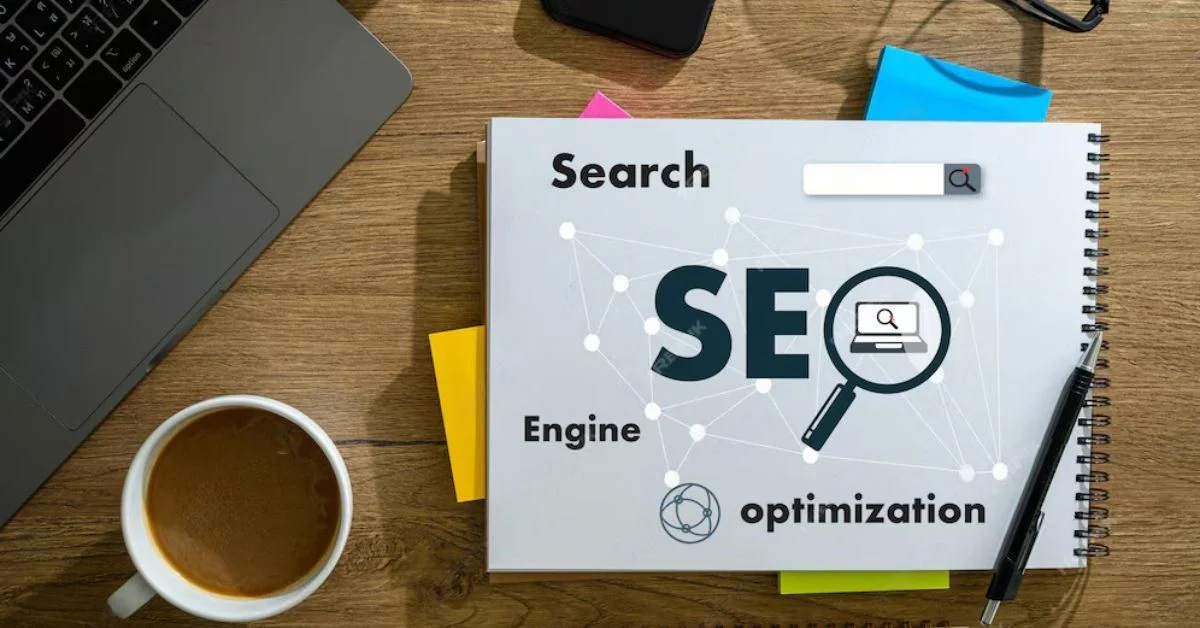SEO
How to Analyze Traffic Sources to Enhance Your Online Visibility

Understanding where your website traffic comes from is crucial to improving your online presence. With the right tools and strategies, you can optimize your marketing efforts, tailor your content, and ultimately attract more visitors to your site.
In this blog post, we will explore how to analyze traffic sources effectively to enhance your online visibility. Read on.
Understanding the Basics of Traffic Sources
Before we dive into the analysis, it’s essential to understand the various types of traffic sources. Generally, traffic sources can be categorized into:
- direct
- organic
- referral
- social
- paid traffic
Each type provides unique insights into how users find your website.
Direct Traffic
Direct traffic consists of visitors who enter your website’s URL directly into their browser. These users are usually familiar with your brand and may have bookmarked your site or typed it manually.
Organic Traffic
Organic traffic comes from search engine results. When users search for relevant keywords and find your website in the search engine results pages (SERPs), they contribute to organic traffic.
Referral Traffic
Referral traffic includes visitors who arrive at your site through links on other websites. This type of traffic often indicates partnerships or mentions from other reputable sites.
Social Traffic
Social traffic is generated from social media platforms like:
These visitors come to your site after clicking on a link shared on social media.
Paid Traffic
Paid traffic involves visitors who click on advertisements, such as Google Ads or social media ads. This type of traffic is crucial for targeted marketing campaigns.
Setting Up Traffic Analysis
Before you start analyzing traffic, you need to set up your tracking tools correctly. This ensures you collect accurate and meaningful data.
Installing Google Analytics
To start with Google Analytics, create an account and add your website as a property. You’ll receive a tracking code that you need to insert into your website’s HTML. Check out BuzzBea Media to learn more about it.
Configuring Goals
Goals in Google Analytics help you measure specific actions taken by visitors. Such as completing a purchase or signing up for a newsletter. Setting up goals allows you to track conversions and understand which traffic sources lead to desired outcomes.
Integrating Other Tools
If you’re using tools like SEMrush or Ahrefs, you may need to integrate them with your website. Follow the setup instructions provided by each tool to ensure seamless data collection.
Analyzing Direct Traffic
Direct traffic can be a valuable indicator of brand recognition and loyalty. By analyzing direct traffic, you can understand how well your brand is known and how often users return to your site.
Measuring Brand Awareness
High levels of direct traffic often suggest strong brand awareness. If users frequently visit your site directly, it means they recognize and trust your brand. Use this data to assess the effectiveness of your branding efforts.
Identifying Returning Visitors
Google Analytics allows you to distinguish between new and returning visitors. Analyzing the behavior of returning visitors can provide insights into customer loyalty and the effectiveness of your content in retaining users.
Optimizing User Experience
If you notice a high bounce rate among direct traffic, it may indicate issues with your site’s user experience. Consider optimizing your website’s design, navigation, and content to keep users engaged.
Analyzing Organic Traffic
Organic traffic is crucial for long-term online visibility. It reflects how well your website ranks in search engine results and how effectively you target relevant keywords.
Assessing Keyword Performance
Use tools like Google Analytics and SEMrush to identify which keywords drive the most organic traffic to your site. Analyzing keyword performance helps you understand what your audience is searching for and how you can optimize your content to rank higher.
Monitoring SERP Rankings
Track your website’s position in SERPs for target keywords. If you notice a drop in rankings, investigate potential issues such as algorithm updates, changes in competitor strategies, or on-page SEO problems.
Enhancing Content Strategy
Based on your keyword performance analysis, refine your content strategy. Focus on creating high-quality, relevant content that addresses your audience’s needs and optimizes for target keywords.
Analyzing Referral Traffic
Referral traffic can indicate the success of your outreach and partnership efforts. By analyzing referral traffic, you can identify valuable sources and build stronger relationships with other websites.
Identifying Top Referrers
Use tools like Google Analytics and Ahrefs to identify which websites send the most referral traffic to your site. High-quality referrers often have a significant impact on your website’s authority and credibility.
Evaluating Backlink Quality
Not all backlinks are equal. Analyze the quality of backlinks by assessing the domain authority of referring websites. High-authority backlinks contribute more to your site’s SEO and overall visibility.
Building Partnerships
Reach out to top referrers and explore opportunities for collaboration. Building strong partnerships with reputable websites can lead to more referral traffic and increased brand exposure.
Analyzing Social Traffic
Social media is a powerful channel for driving traffic and engaging with your audience. Analyzing social traffic helps you understand which platforms are most effective and how you can optimize your social media strategy.
Tracking Social Media Performance
Use tools like Google Analytics and social media analytics platforms to track the performance of your social media campaigns. Identify which posts generate the most traffic and engagement.
Understanding Audience Preferences
By analyzing social traffic, you can gain insights into your audience’s preferences and interests. Tailor your social media content to align with these preferences and drive more traffic to your site.
Leveraging Social Proof
Encourage user-generated content and social proof to enhance your brand’s credibility. Positive reviews, testimonials, and user-generated posts can attract more visitors from social media platforms.
Analyzing Paid Traffic
Paid traffic is essential for targeted marketing campaigns. By analyzing paid traffic, you can optimize your ad spend and maximize your return on investment (ROI).
Evaluating Ad Performance
Use tools like Google Ads and Facebook Ads Manager to track the performance of your paid campaigns. Analyze metrics such as:
- click-through rates (CTR)
- conversion rates
- cost per click (CPC)
A/B Testing Ads
Conduct A/B tests to compare different ad variations and identify which ones perform best. Use the insights gained from A/B testing to refine your ad copy, visuals, and targeting strategies.
Take Your Online Visibility to the Next Level
Analyzing traffic sources is a critical aspect of enhancing your online visibility. By following the tips above, you can make data-driven decisions to optimize your marketing strategies.
Ready to take your website to the next level? Start analyzing your traffic sources today and watch your online visibility soar.
If you want to read more articles, visit our blog.
SEO
Understanding Backlinks: A Comprehensive Guide for Enhancing Your SEO

Backlinks are fundamental to SEO success, serving as endorsements from one website to another. Recognized by search engines as votes of confidence, quality backlinks can significantly improve a site’s visibility and ranking.
What Are Backlinks?
Backlinks, also known as inbound or incoming links, occur when one website links to another. These are crucial for SEO because they signal to search engines that others vouch for your content. This endorsement can boost your site’s credibility and, ultimately, its rank in search engine results pages (SERPs).
The Importance of Quality Backlinks
Not all backlinks are created equal. The best backlinks have several key characteristics:
- Authority: Links from reputable, high-authority sites provide more value.
- Relevance: Links from sites within the same industry or niche are more beneficial.
- Dofollow Status: Dofollow links allow search engines to follow them and pass on link equity, unlike nofollow links, which do not pass on link equity.
- Anchor Text: The clickable text part of a hyperlink. Ideally, anchor text should be relevant to the linked page.
- Placement: Links placed within the main body of a webpage are generally more powerful than those in the footer or sidebar.
How to Acquire Quality Backlinks
Are you looking to Backlinks kaufen? Then you have come to the right place.
- Create Compelling Content: Produce high-quality content that addresses the needs and interests of your target audience. This includes in-depth articles, infographics, videos, and more that provide value and encourage other sites to link back to your content naturally.
- Guest Blogging: Writing articles for other relevant blogs can provide backlinks and is an effective way to reach new audiences.
- Broken Link Building: This involves finding broken links on other websites and suggesting your content as a replacement.
- Skyscraper Technique: Identify popular content with lots of backlinks, create something better, and then reach out to those who linked to the original piece.
- Engage in Community Discussions: Participate in forums and comment sections where you can provide valuable insights and link back to relevant content on your site.
Avoiding Backlink Pitfalls
- Buying Backlinks: This can lead to severe penalties from Google.
- Irrelevant Links: Links from unrelated sites may not contribute value and can sometimes harm your site’s standing.
- Over-Optimization: Excessive use of keyword-rich anchor text can look spammy and lead to penalties.
Tools and Strategies for Effective Backlink Management
- Use Tools like Ahrefs or Google Search Console: These tools can help you track your backlinks and the quality of links.
- Regular Audits: Periodically check your link profile for any low-quality or spammy links that could harm your ranking.
- Focus on Organic Growth: Encourage natural link development through networking and collaborative opportunities with authoritative sites in your industry.
Conclusion
Backlinks remain a cornerstone of successful SEO strategies. By focusing on quality over quantity, engaging in ethical link-building practices, and continuously creating valuable content, websites can improve their SEO performance significantly. Remember, a good backlink profile helps not only in enhancing your SEO but also in establishing your site as a credible and authoritative source in your industry.
SEO
Conquering the Kenyan Web: Best Practices for SEO in Nairobi

Nairobi’s digital landscape is a bustling marketplace where businesses of all sizes vie for online visibility. Search Engine Optimization in Nairobi (SEO) is the key to unlocking organic traffic and attracting potential customers through search engines like Google. However, a one-size-fits-all SEO strategy won’t suffice in the unique Kenyan market. This article explores best practices specifically tailored to help Nairobi businesses dominate local search results.
Keyword Research with a Kenyan Twist
Keyword research is the cornerstone of any successful SEO campaign. Here’s how a digital marketing agency in Nairobi can tailor its SEO services for the Nairobi market:
- Localize Your Keywords: Go beyond generic keywords and identify long-tail keywords with local relevance. Kenyans might search for “best restaurants Nairobi CBD” instead of just “best restaurants.”
- Consider Swahili Keywords: Swahili is a widely spoken language in Kenya. Incorporate Swahili keywords into your content strategy to reach a broader audience (e.g., “hoteli za kifahari Nairobi” for luxury hotels).
- Utilize Local Search Tools: Leverage Google Keyword Planner and local SEO tools to identify popular search terms with high search volume and low competition specific to Nairobi.
On-Page Optimization: Optimizing Your Website for Local Success
Once you have your keywords, optimize your website to improve search engine ranking and user experience:
- Target Keywords in Strategic Locations: Integrate relevant keywords naturally into your website’s title tags, Meta descriptions, headers (H1, H2, etc.), and throughout the content.
- Location, Location, Location: Optimize your Google My Business listing with accurate business information, high-quality photos, and positive customer reviews. Encourage satisfied clients to leave reviews to boost local SEO.
- Mobile-First Approach: A significant portion of Nairobi’s online population accesses the internet via smartphones. Ensure your website offers a seamless user experience for mobile users with fast loading speed and responsive design.
- Content is King (and Queen): Create high-quality, informative content that resonates with your local target audience. Address their specific needs and challenges, showcase local success stories, and highlight your expertise in the Kenyan market.
- Optimize Images with Local Context: Include relevant keywords in image alt tags and use high-quality visuals that reflect the Kenyan culture and local landscape.
Building Backlinks: Earning Trust in the Kenyan Online Sphere
Backlinks from reputable websites act as votes of confidence for your website in the eyes of search engines. Here’s how to build trust and secure high-quality backlinks in Nairobi:
- Collaborate with Local Businesses: Partner with complementary businesses in Nairobi for guest blogging opportunities or co-creating informative content that benefits both audiences.
- Target Local Online Publications: Reach out to Kenyan online publications, blogs, and directories relevant to your industry and explore guest blogging opportunities to earn backlinks from high-authority websites.
- Engage on Social Media: Actively participate in relevant online communities and social media groups in Nairobi. Share valuable content, engage in discussions, and build relationships with influencers who might be willing to link back to your website.
- Focus on Quality over Quantity: Prioritize earning backlinks from high-quality, relevant websites in the Kenyan online space. Avoid low-quality link farms and schemes that can negatively impact your SEO efforts.
Technical SEO: Ensuring a Smooth User Experience for All
Technical SEO ensures your website functions flawlessly and is easily crawled by search engines:
- Website Speed Optimization: Website loading speed is a crucial ranking factor. Use website speed testing tools and implement techniques to improve website speed for a smooth user experience.
- Structured Data Implementation: Utilize structured data markup to provide search engines with additional information about your website content, potentially improving search result snippets and attracting more clicks.
- Mobile Responsiveness: Ensure your website adapts and displays correctly across all devices, especially smartphones, to cater to the mobile-first user base in Nairobi.
- Regular Website Audits: Conduct regular technical SEO audits to identify any crawl errors, broken links, or technical issues that might hinder your website’s ranking.
Staying Ahead of the Curve: Embracing Local Trends and Google Updates
The SEO landscape is constantly evolving. Here’s how to stay competitive in the Nairobi market:
- Monitor Google Algorithm Updates: Stay informed about the latest Google algorithm updates and adjust your SEO strategy accordingly. Focus on white-hat SEO techniques and user experience to ensure long-term success.
- Embrace Voice Search Optimization: Voice search is becoming increasingly popular. Optimize your website content with natural language and long-tail keywords to improve your ranking for voice search queries.
- Focus on Local Events and Trends: Stay updated on local events, trends, and news.
SEO
How to Find Affordable SEO Services Without Compromising Quality

Finding cost-effective seo solutions is an important step for small businesses that want to improve their search engine optimization strategies. In this blog post, we will discuss five tips for finding quality SEO services without breaking the bank.
Look for agencies with client reviews and testimonials. Also, ask for writing samples and analyze the content they’ve created for other websites.
1. Do Your Research
Aside from assessing the SEO agency’s portfolio, you must also research the companies that they have worked with in the past. By doing so, you will be able to tell how familiar they are with your industry, niche, and target market. This will help them formulate strategies that are suited to your business’s specific needs.
Additionally, make sure to look for an affordable SEO provider that advocates transparent pricing and clear communication.
This will ensure that you are getting the best value for your money. Avoid agencies that offer extravagant promises like guaranteeing top positions on Google, as they are most likely relying on black-hat techniques that could hurt your website’s rankings. They may also use spammy tactics that will earn you a Google penalty in the long run.
2. Ask About Discounts
If you do a quick search online for “affordable SEO services,” you’ll find countless providers offering to get your site on the first page of Google for a low one-time fee. However, most of these cheap SEO services are based on unrealistic promises.
Rather than looking for the cheapest rates, look for value-added services or an agency that offers discounts for repeat business and referrals. Additionally, be wary of agencies or freelancers that require long-term contracts.
These types of contracts can be costly in the long run as they can lead to stagnant or negative SEO results over time. Instead, consider working with an SEO company or freelancer that offers performance-based pricing based on meeting concrete key performance indicators like keyword rankings and organic traffic growth.
3. Look for a Reputable Provider
When you’re searching for affordable SEO services, it’s essential to find a provider that you can trust. Look for an agency that has experience working with small businesses and understands the challenges and opportunities they face. Also, ask for testimonials and recommendations from previous clients.
Avoid cheap SEO services that claim they can guarantee a top Google ranking in a short amount of time. These companies often resort to black hat SEO tactics that can damage your website’s rankings in the long run.
It’s also important to look for a reputable SEO expert who is transparent about their process and strategies. This will help you make an informed decision and get the most bang for your buck. In addition, avoid agencies that require a long-term contract.
4. Get Quotes
The cost of SEO services varies, so it’s important to get quotes from multiple providers. This will help you determine which ones are within your budget while also ensuring that the services you’re getting are quality-oriented and offer a return on investment.
It’s also important to consider the company’s experience. Look for companies with a proven track record of success and an extensive portfolio of clients. Also, ask about their client retention rate and whether their specialists are experienced in a variety of SEO tasks.
Lastly, look for affordable SEO services that prioritize small and startup businesses. JetRank offers affordable pricing while also providing high-quality results. Their team is dedicated to helping their clients succeed online and they’re always willing to go the extra mile to ensure a positive customer experience.
5. Stick to Your Budget
When evaluating potential affordable SEO service providers, ask about their past work and specific examples in your industry. A reputable agency will understand the nuances of your business and its goals. They will also have an in-depth understanding of your industry and competitors.
Cheaper services may use generic tactics that will never achieve real results for your business. Worse yet, they may rely on black hat techniques that could leave you facing severe penalties down the road. You should also look for a company that provides transparent reporting and does not hide behind custom dashboards. If you are unsure about a company’s reporting, ask them to provide you with a sample of their Google Analytics report. This will give you a clear picture of their performance and effectiveness.

 TECHNOLOGY4 months ago
TECHNOLOGY4 months agoBlog Arcy Art: Where Architecture Meets Art

 ENTERTAINMENT2 weeks ago
ENTERTAINMENT2 weeks agoExploring the Kristen Archives: A Treasure Trove of Erotica and More

 LIFESTYLE4 months ago
LIFESTYLE4 months agoThe Disciplinary Wives Club: Spanking for Love, Not Punishment

 LIFESTYLE2 weeks ago
LIFESTYLE2 weeks agoWho Is Sandra Orlow?

 GENERAL3 days ago
GENERAL3 days ago5 Factors That Affect Tattoo Removal Success

 ENTERTAINMENT8 months ago
ENTERTAINMENT8 months agoYuppow: Your Free Source for Movies and TV Shows

 ENTERTAINMENT1 week ago
ENTERTAINMENT1 week agoKiss KH: The Streaming Platform Redefining Digital Engagement and Cultural Currents

 HOME IMPROVEMENT5 days ago
HOME IMPROVEMENT5 days agoGet Your Grout to Gleam With These Easy-To-Follow Tips












